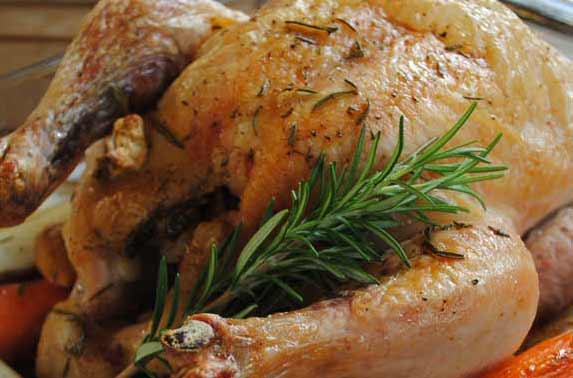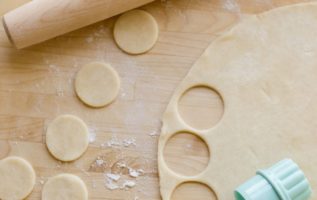
Here it is upon us once again and all too soon: Thanksgiving.
You know what that means? Well of course it signals several helpings of turkey and a tryptophan-induced coma in front of the television soon after. It also means that those other holidays — Christmas, Hanukkah, Kwanzaa and Chrismukkah — are just a blink away.
As things in the kitchen move into high gear, it’s good to slow down and remember to enjoy the process. If you can think of what you are doing as an expression of love instead of a load of work, it will make the day that much more enjoyable.
It’s also a good time to remind about basic kitchen safety of the fowl variety. Undercooked turkey, as we all know, does not make for good eats or safe eats. Here are some tips and facts to remember if you are cooking the bird yourself in the oven:
- Be sure it’s thawed, but don’t do it at room temperature. Ideally, a frozen bird should have several days in the fridge to thaw, about a day for every four pounds. If you’re in a pinch, you can thaw the bird quicker by covering it in cold water, unopened in its wrapper. If you do it this way, be sure to change the water frequently, every half hour or so.
- Before cooking the turkey, clear the cavity of the various parts we call giblets. Rinse the whole bird with cool water inside and out, pat dry, then proceed with seasoning, similar to roasting a whole chicken.
- 325 degrees is the recommended oven cooking temperature from the experts at Butterball. A 10-18 pound bird will take from 3 to 4 1/2 hours. One as big as 24 pounds will take more than 5 hours. The general rule of thumb is about 12 minutes per pound for an unstuffed bird. Cook it breast side up.
- The bird is done when it hits 180 degrees, as measured with a thermometer in the thigh. (Note: The USDA will let you get by at 165, but it’s better to be safe than sorry if you’re new at this.) And be sure to let it rest at least 15 minutes before you go carvin’ to let the juices recirculate.
- For beginning cooks, I don’t recommend stuffing the bird, since this can increase your chances of picking up salmonella. The reason is, by the time the stuffing reaches the proper temperature — 165 degrees — the rest of the turkey can dry out. Make the stuffing on the stove and save yourself the headache and the risk.
- Remember to thoroughly clean and sanitize absolutely anything that has come into contact with raw turkey before it touches anything else. That includes cutting boards, knives and your hands.
- Toward the end of cooking, if the wings and skin are browning too much before the turkey is done, cover them loosely with foil.
- If you need help cooking your turkey the day of, call the Butterball Talk Line, that famous line of yearly communication in which turkey experts will talk you through any Thanksgiving dinner anguish. The number is 1-800-BUTTERBALL, or 1-800-288-8372.
If you’re not making the main event, remember there’s plenty of other sides you can put together quickly and easily. The host will love you for it, too. Here are links to some on this site, with step-by-step photos on how to make them:
- Glazed carrots
- Oven-baked potato fries — Throw these in the oven with the turkey, and try them with sweet potatoes if you’d like!
- Garlic-rosemary mashed potatoes
- Pasta salad
- Whipped cream parfait — A sweet way to end the meal
Remember to relish the day and don’t stress about the food. In the end, the most important thing at the table are the friends and family gathered.
Happy Thanksgiving.
Source: iwanttocook.com (defunct blog)



























